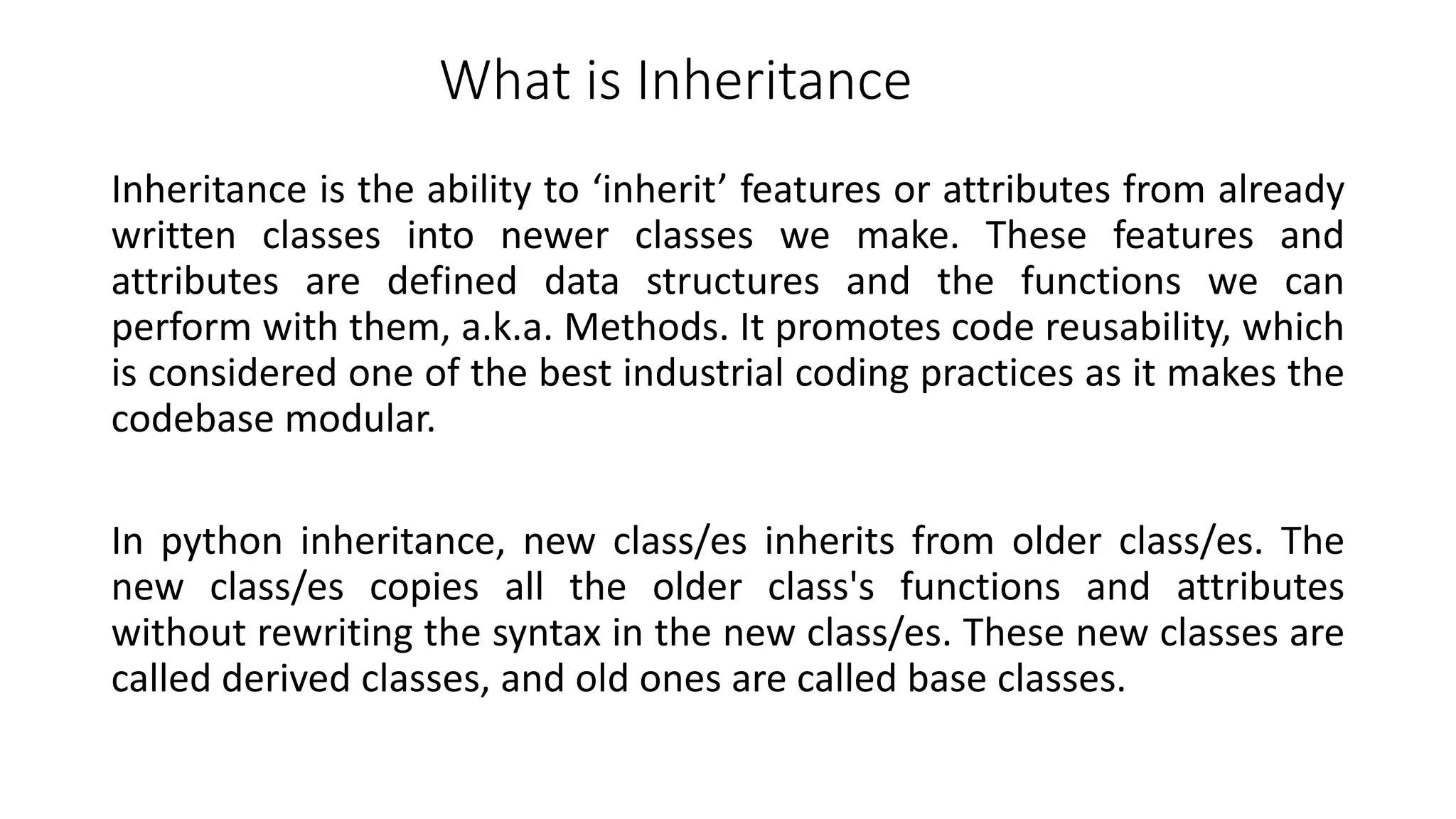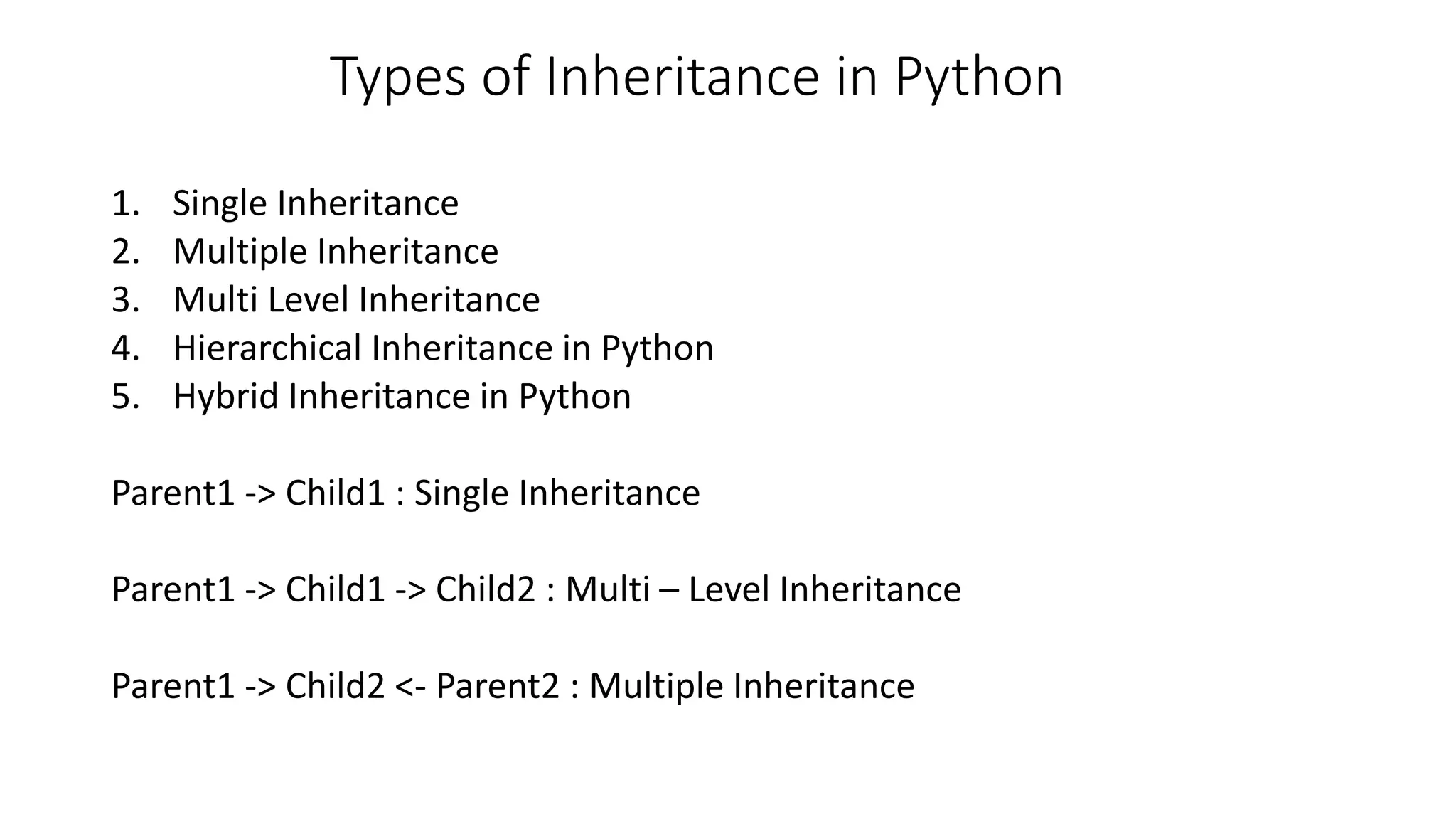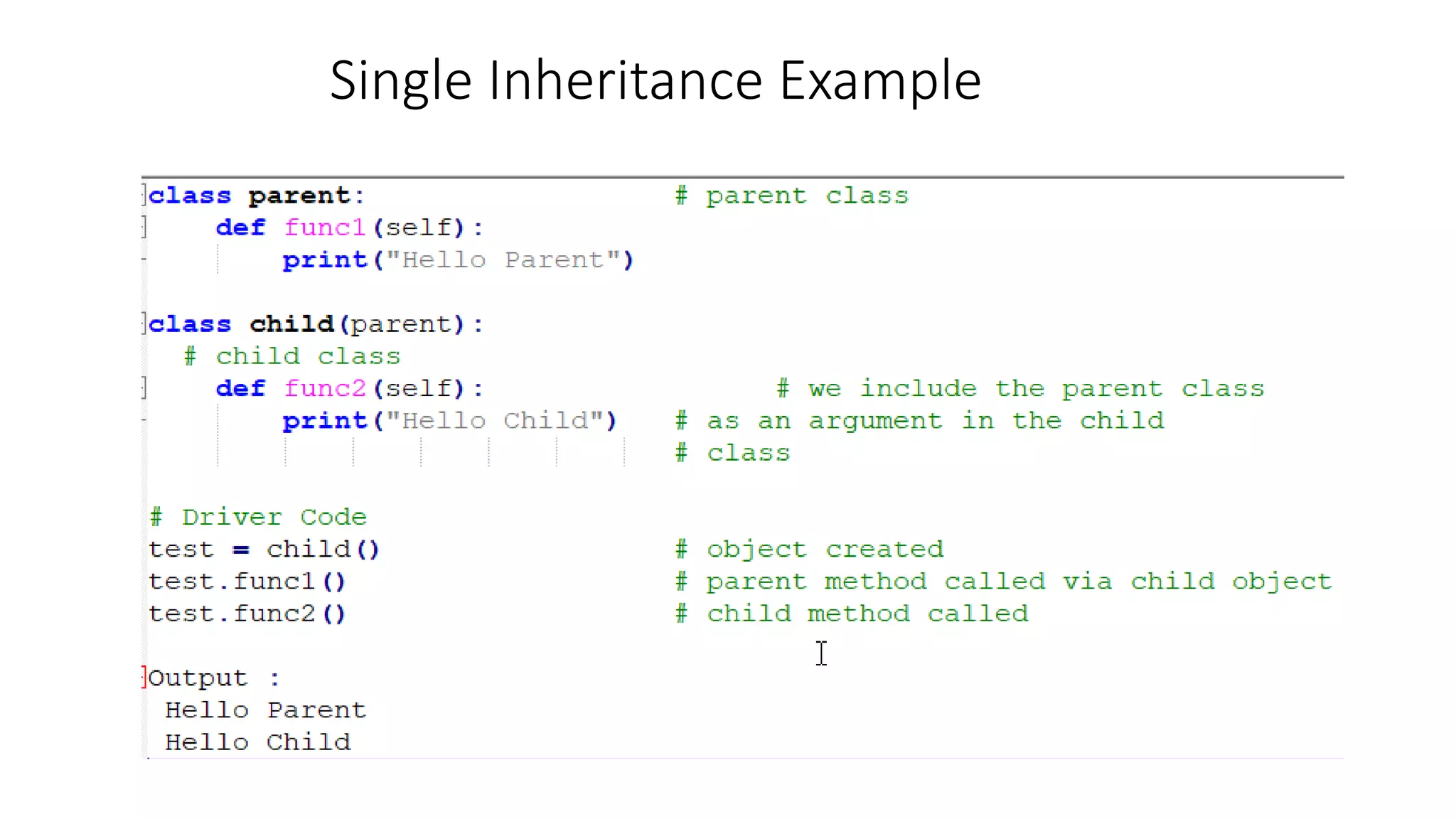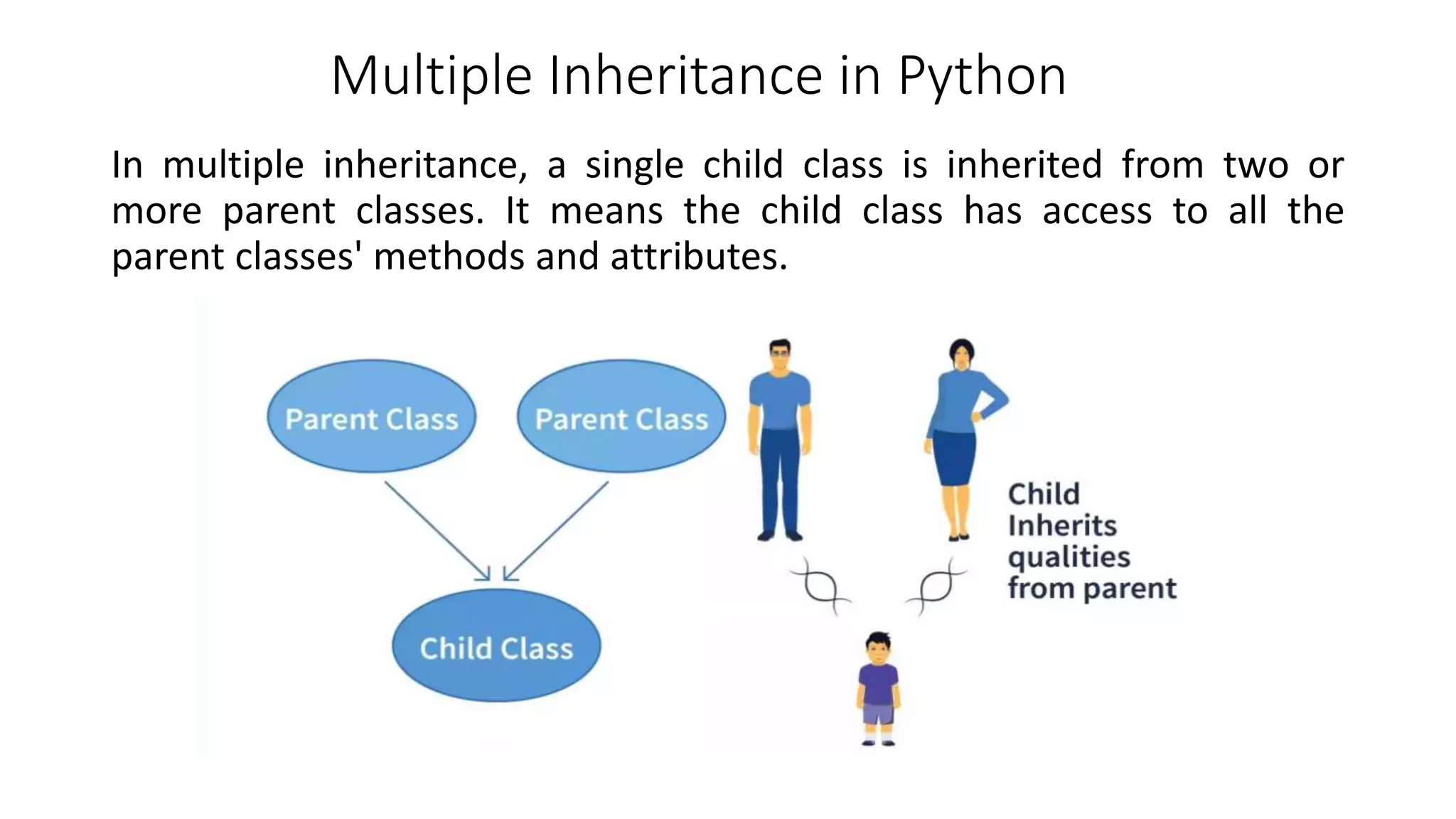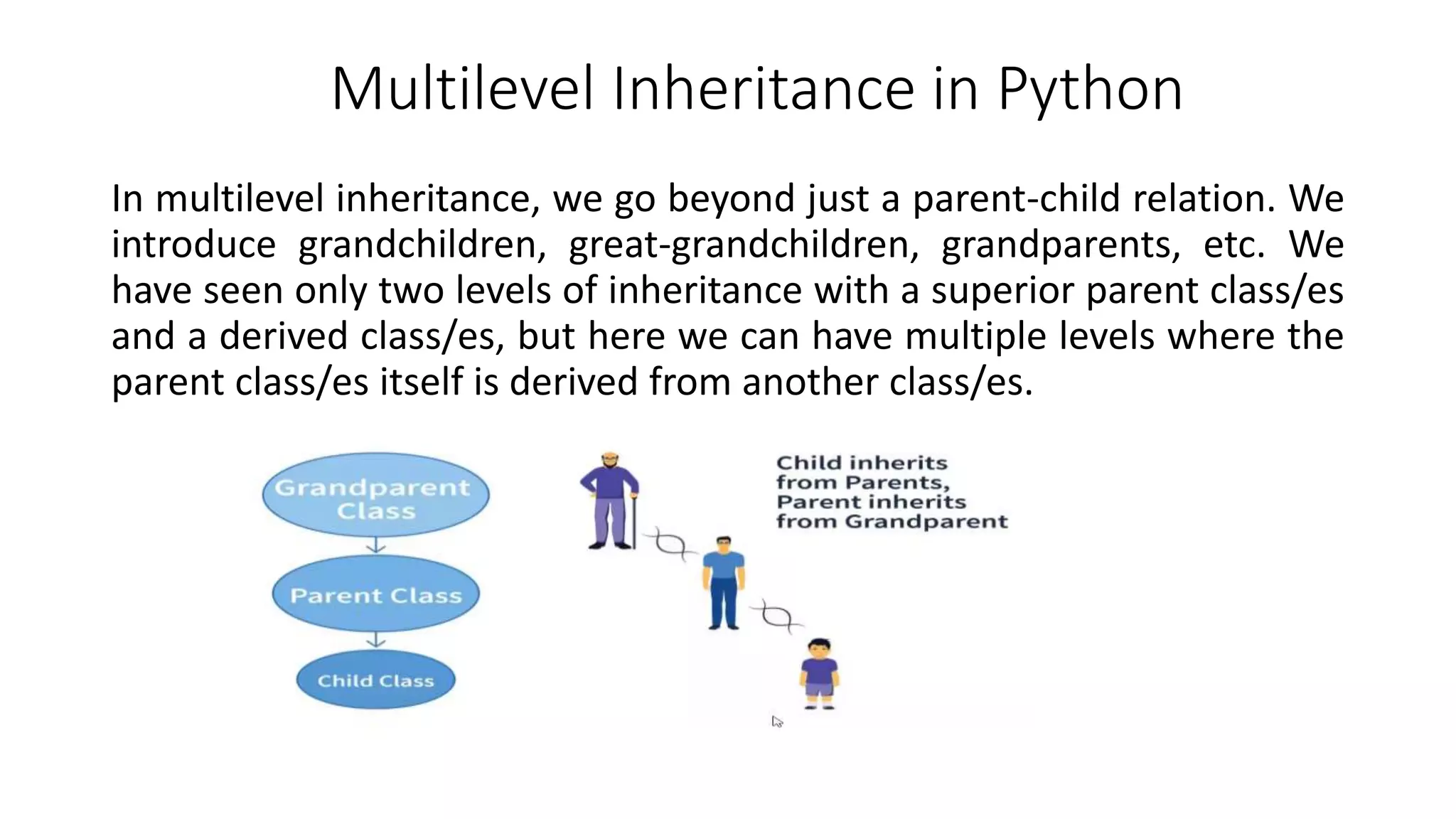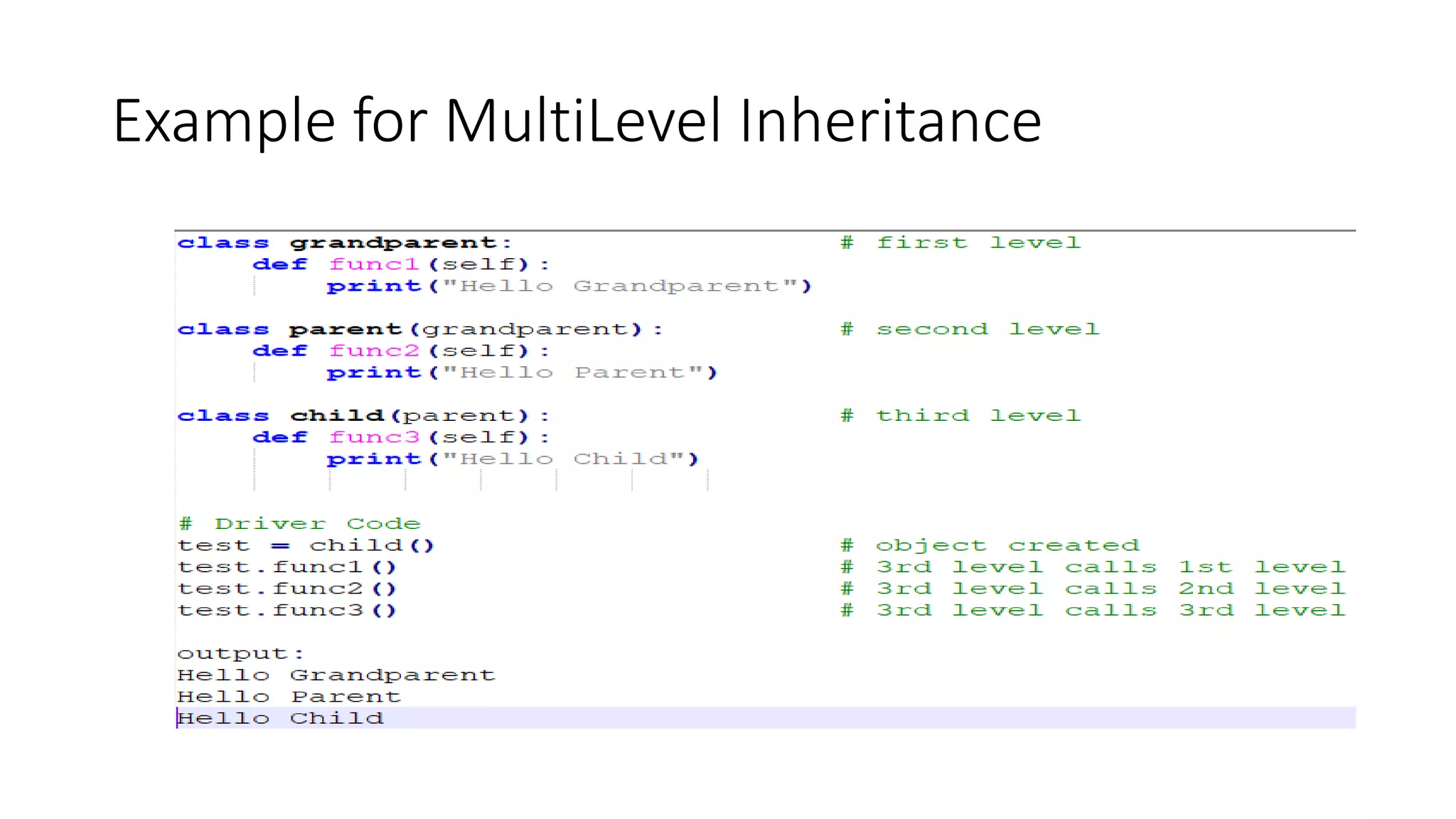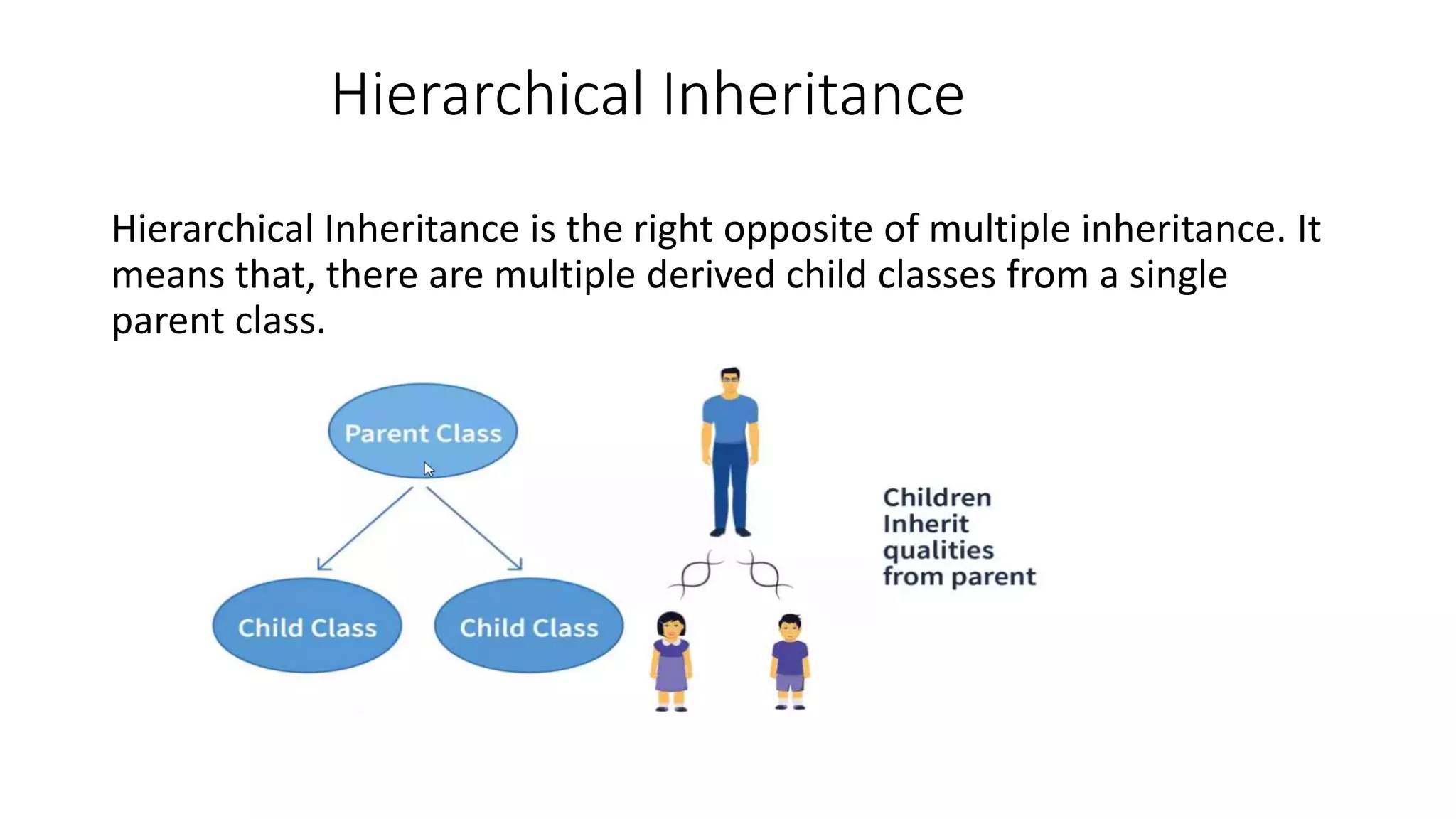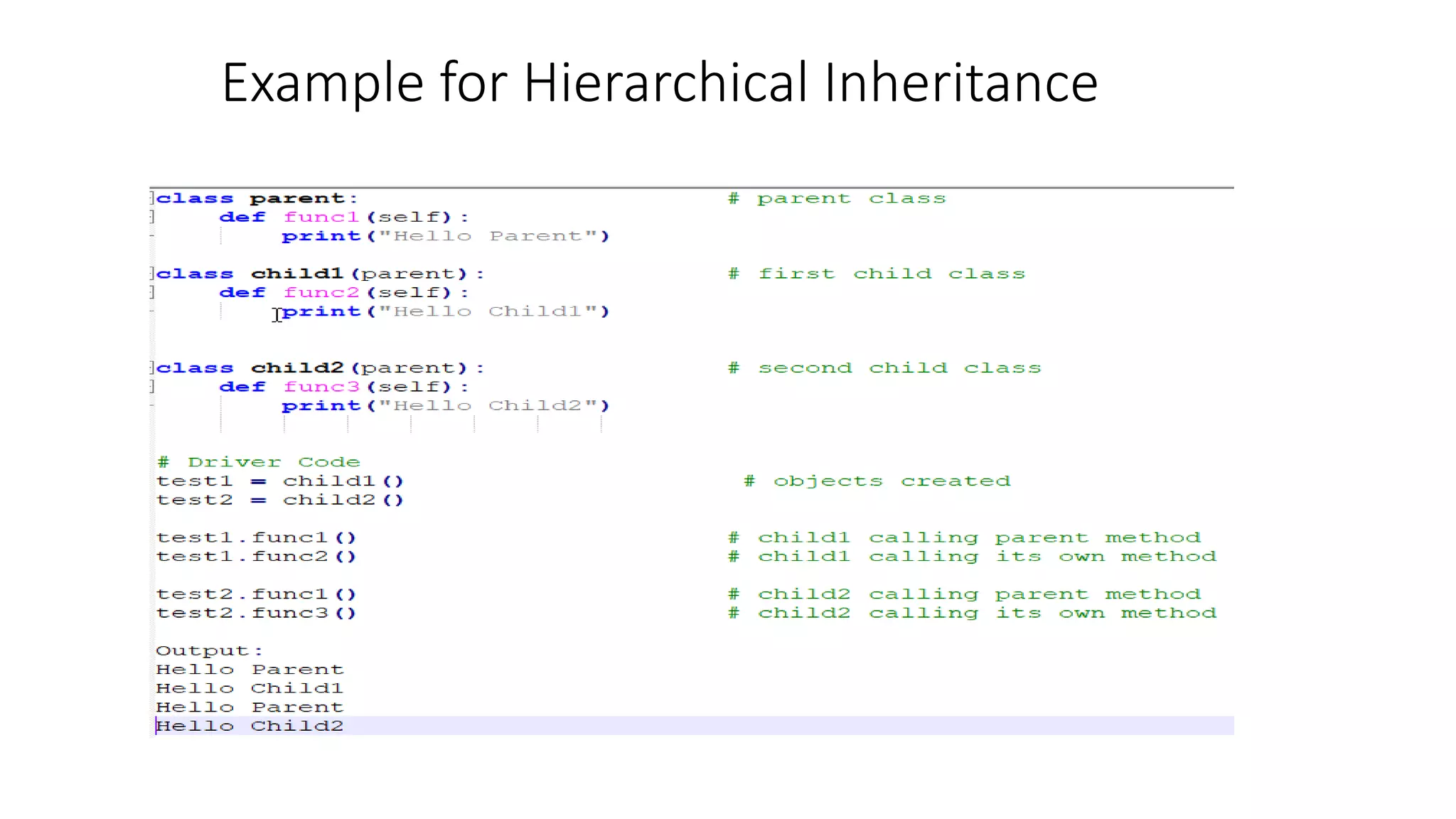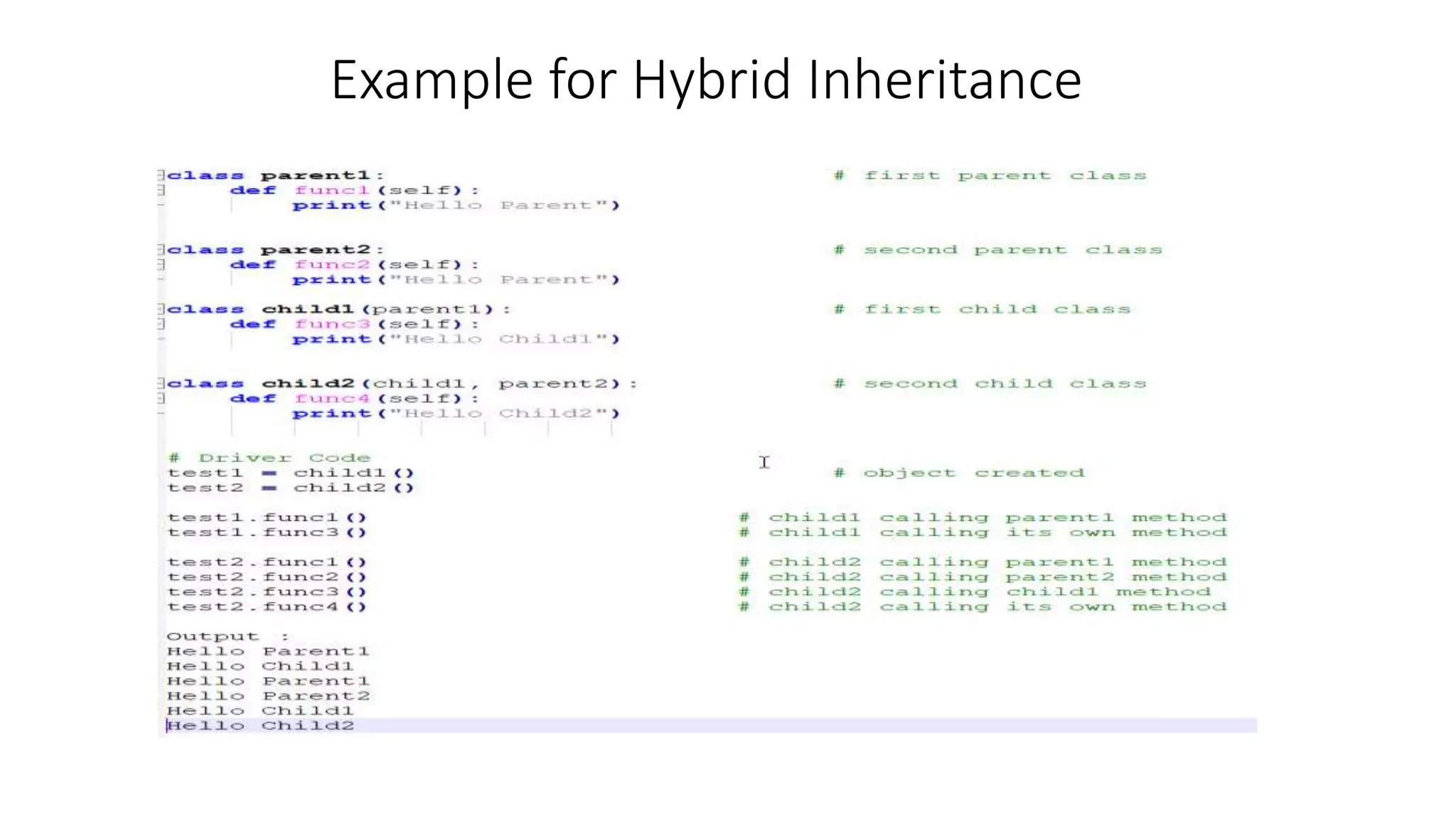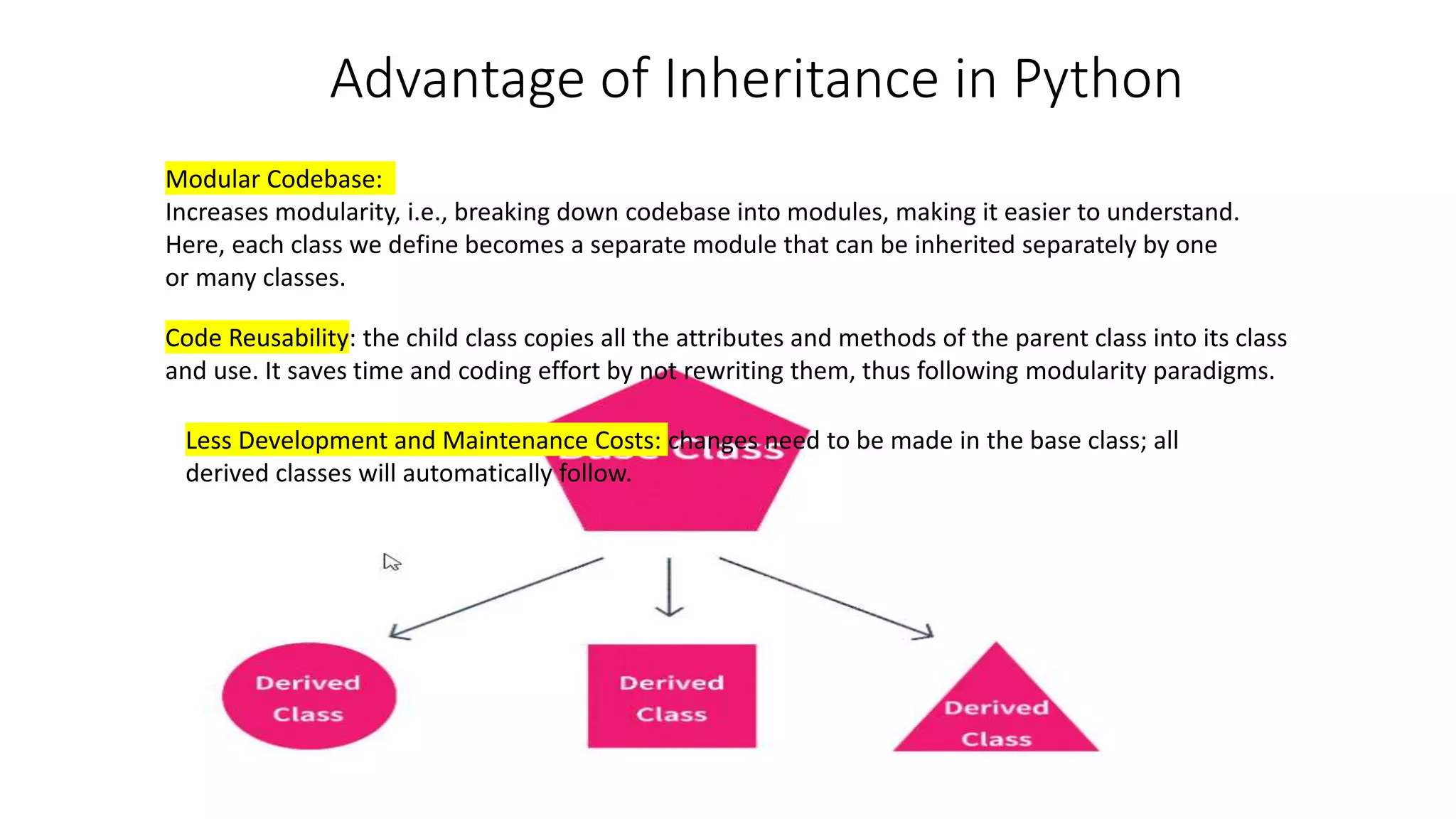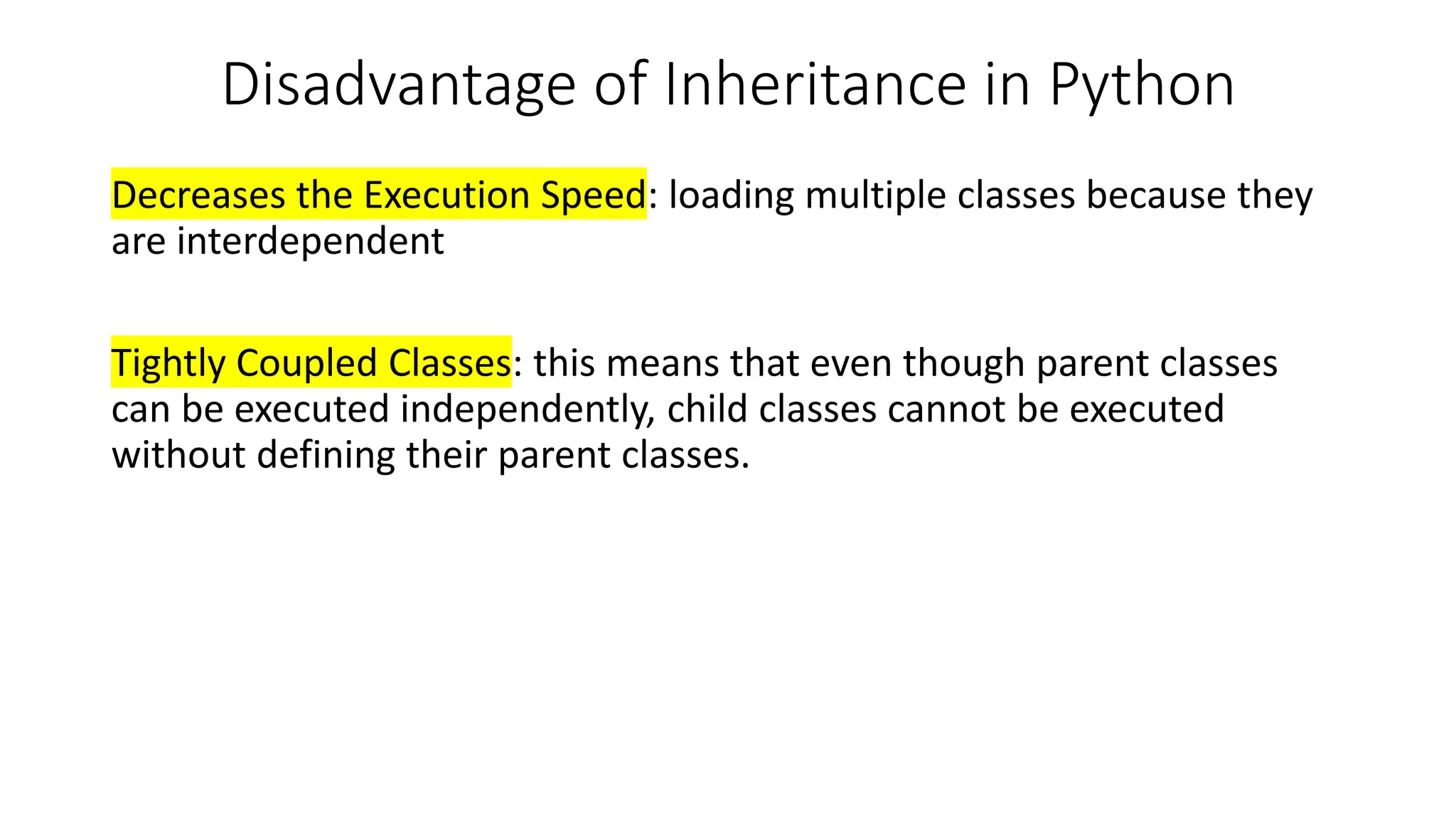Inheritance in Python allows new classes to inherit features and attributes from existing classes, promoting code reusability and modular design. There are several types of inheritance, including single, multiple, multilevel, hierarchical, and hybrid inheritance, each with distinct characteristics. While inheritance offers advantages like modularity and reduced maintenance costs, it may also lead to decreased execution speed and tightly coupled class dependencies.

